Pictures of Walbran's flies - calling Johnno for help.
Moderators: letumgo, William Anderson
-
daringduffer
- Posts: 2195
- Joined: Sun Feb 22, 2009 5:11 am
Pictures of Walbran's flies - calling Johnno for help.
http://www.flymphforum.com/viewtopic.ph ... ours#p3421
If we follow this link, we find a topic worthy of interest. I very much would like Johnno - or someone else - to re-post those photos...
dd
If we follow this link, we find a topic worthy of interest. I very much would like Johnno - or someone else - to re-post those photos...
dd
- Hans Weilenmann
- Posts: 2109
- Joined: Mon Feb 23, 2009 8:45 pm
- Location: Amstelveen, The Netherlands
- Contact:
Re: Pictures of Walbran's flies - calling Johnno for help.
Martin,
Not exactly what you were after - the NZ Flies book - but perhaps of some interest is the scanned version of this book:
http://www.biodiversitylibrary.org/bibl ... 0#/summary
British Angling Flies - by Michael Theakston, edited by Francis M. Walbran, from the late 1800's.
Cheers,
Hans W
Not exactly what you were after - the NZ Flies book - but perhaps of some interest is the scanned version of this book:
http://www.biodiversitylibrary.org/bibl ... 0#/summary
British Angling Flies - by Michael Theakston, edited by Francis M. Walbran, from the late 1800's.
Cheers,
Hans W
Re: Pictures of Walbran's flies - calling Johnno for help.
It's worth noting that "dun" in that text meant a caddis fly.
Bob
Re: Pictures of Walbran's flies - calling Johnno for help.
Hi DD,daringduffer wrote:http://www.flymphforum.com/viewtopic.ph ... ours#p3421
If we follow this link, we find a topic worthy of interest. I very much would like Johnno - or someone else - to re-post those photos...
dd
I have the pictures where you are after, but I do not know if Johnno has any objection about reposting these pictures. So please Johnno if you are a member of this forum and read this, tell me that I can repost them.
Greeting
There will allways be a solution.
http://www.aflyinholland.nl
http://www.aflyinholland.nl
Re: Pictures of Walbran's flies - calling Johnno for help.
Yup! Go for it!
- letumgo
- Site Admin
- Posts: 13346
- Joined: Sat Feb 21, 2009 7:55 pm
- Location: Buffalo, New York
- Contact:
Re: Pictures of Walbran's flies - calling Johnno for help.
Cool. Thanks John. 
Ray (letumgo)----<°))))))><
http://www.flytyingforum.com/index.php? ... er=letumgo
"The world is perfect. Appreciate the details." - Dean
http://www.flytyingforum.com/index.php? ... er=letumgo
"The world is perfect. Appreciate the details." - Dean
Re: Pictures of Walbran's flies - calling Johnno for help.
Hi DD here are the pictures and something of the post of Johnno:
I have no idea how old they are, other than pretty old! North Country by the looks is my guess. Had them for a long time having picked them up from an old junk shop some years back. There were labels attached to the flies hence the names - they appear accurate enough. I have posted these elsewhere in the past about 8 months back, but this forum seems to be a place they should be shown. Apologies that my pics are not to Hans' standards but I hope you will get a reasonable idea...
These are the pictures:
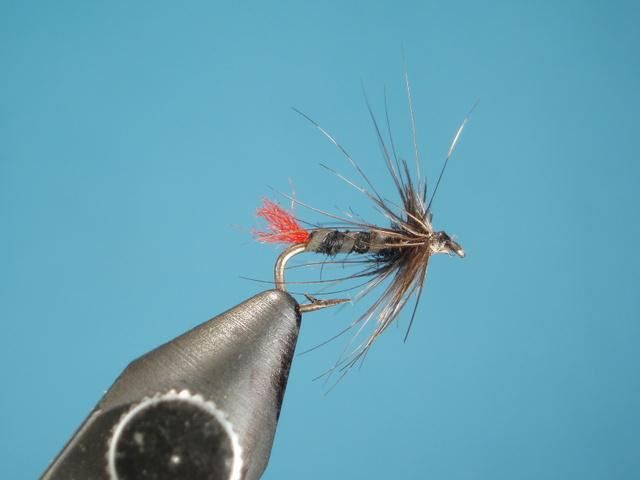
ZuluRed
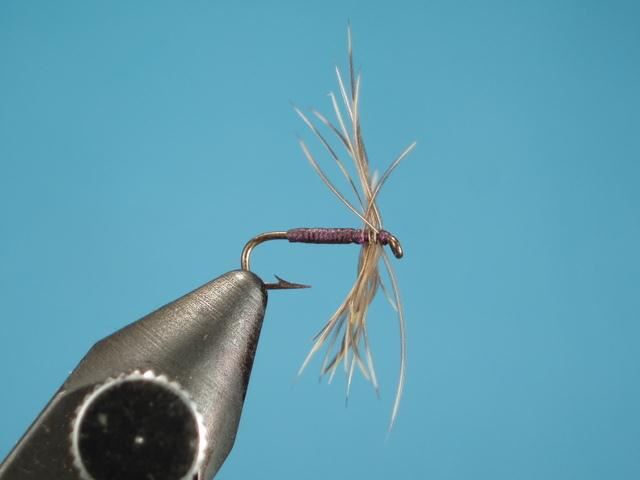
SnipeandPurple
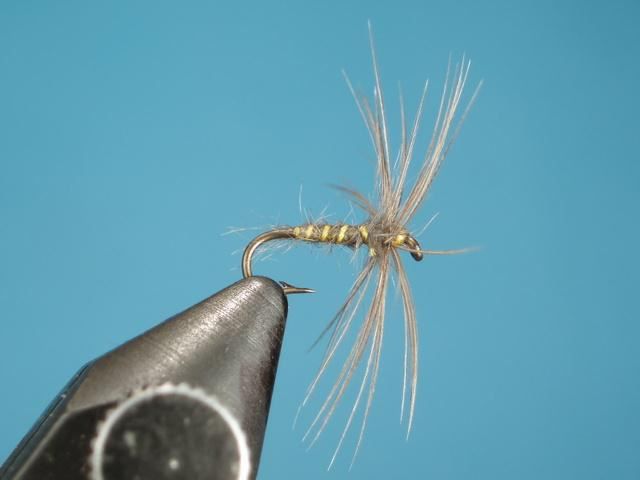
WaterhenBloa
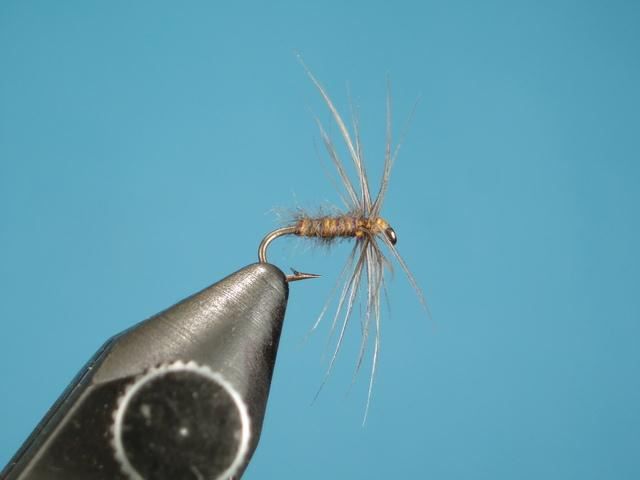
WaterhenBloaDark

PartridgeandOrange
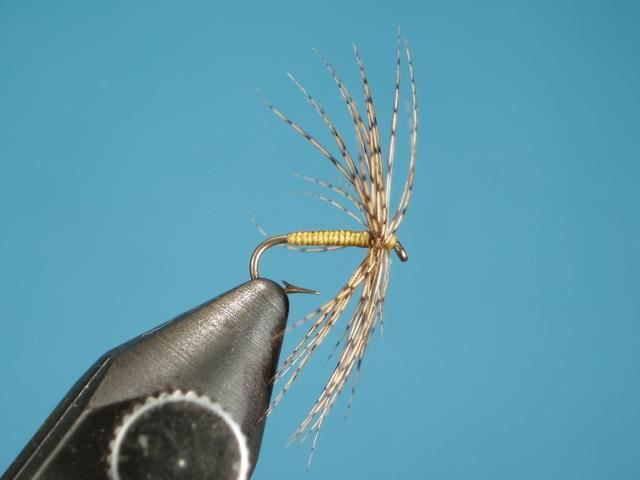
PartridgeandYellow
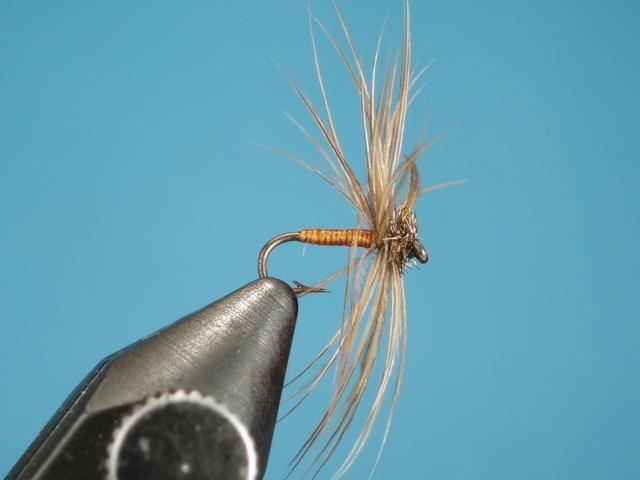
BrownOwl

DarkTweedle

MarchBrown
And although not a soft hackle, an interesting gut snelled fly nevertheless....
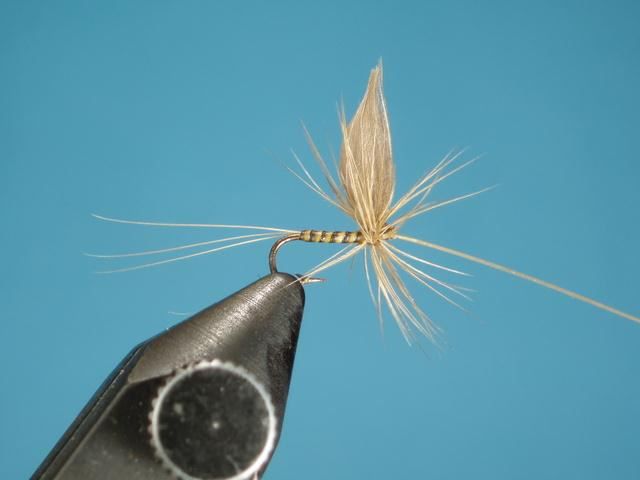
BlueDunQuill
Letumgo: The majority are snecks, but a couple are not. William: I have a book 'New Zealand Fishing Flies" by R K Bragg. It's a large one, bigger than foolscap. There are a number of colour photos in the book and because the book is big, happily the photos are as well. The photos are of flies in picture frames. The book catalogues a lot of the old flies used in NZ (and is such an extremely valuable reference for my research on early NZ - and English - flies) and in one of the pics there are 9 flies of which 6 are identical to the flies above. (Snipe and Purple, Brown Owl, Dark Tweedle, - although mine is labelled "Dark Needle" - Partridge and Yellow, Partridge and Orange and Waterhen Bloa) Identical to the point that I believe that they are from the same batch of flies. Those flies are named as been tied by a Francis M Walbran of Leeds and there is a date of 1899. Aparently he was regarded as one of the great grayling fishermen who wrote a book in 1895 "Grayling and how to catch them". (Abe Books lists it and another he wrote and when the exchange rate gets better, I'm going to get a copy) There is a note to say the flies are tied on Kendal Sneck Hooks. Now I have seen Kendal Snecks and the hooks on which my flies are tied look pretty much the same. They were first manufactured in 1887 and were a favoured hook by one Frederick Halford no less. So it's an assumption only based on a bit of educated guess work and I hesitate to commit to fact, but I believe these flies MAY have been tied by Mr Walbran sometime around 1899. Thats why I said at the start of the pics they were old and likely North Country didn't really take it further.... More work to be done
Alas RK Bragg who came to NZ from England having worked for Farlows for years and years is now dead so that line of enquiry is gone. I am trying to track down the picture frames so I can get to have a closer look at them, maybe even photograph the flies further. All in all there are about 200 + old wet flies and soft hackles in various frames both on eyed hooks and gut snelled. Along with several hundred other streamers, dries and nymphs in various frames. A treasure worth tracking down!
As I said only MAY have been tied by him. Perhaps not. One day if I ever have a look at the flies tied by him that could give me a more definitive answer to the attribution. Walbran ran a tackle shop apparently. So he would have had access to feathers and fur. But can anyone tell me how they stored their feathers back in those days like did they have them on skins or packaged loose in paper bags or boxes? Reason I ask is that maybe they did'nt always have access to the "right" sized hackles and used what sizes they had at the time. Remember back then, fishing (particularly in the North) was a put-food-on-the-table thing so they used what they could to get the job done. Of course they would not have gone to extremes, but maybe as long as the hackle size was in the ballpark of what may be called conventional (probably more by us than them back in those days) then they were happy, particularly if they caught fish.
And of course they didn't have macro photography either!
On the other hand, The waters of the north I assume are "rough" streams predominantly - or perhaps more so around where the tier of these flies lived and so perhaps he deliberately tied them fuller and longer in the hackle to compensate for that rougher more turbulent water. I'd like to get Walbran's book to find out where he fished. (Anyone got it??) Could give us a clue - if he was the tier! Another perspective: If you were able to bring back the Pritts and Walbrans of this world and get them to look at our soft hackle flies, their perspective may be that the flies are too lightly dressed! Probably unlikely when you read Stewart, but who knows? Also when did the convention of proportions as we know them first come into play? Anyone able to pin it down to a book and/or publishing date of the same? It may well be that the proportion thing is more important since that time than before. An interesting topic - great stuff to discuss over a red wine or three in the evening.. cheers. Edit: Looking at the photographs of the early flies in the book, they all seem to be quite full and long in the hackle. I am out the door for ten days hunting and fishing (
) and upon my return I'll attempt some photographs of the photographs and post if they come out alright (or I'll scan them if I can get the book on the scanner) so you can see what I mean.
This is most of the originally text by John
Greeting
Ruard
I have no idea how old they are, other than pretty old! North Country by the looks is my guess. Had them for a long time having picked them up from an old junk shop some years back. There were labels attached to the flies hence the names - they appear accurate enough. I have posted these elsewhere in the past about 8 months back, but this forum seems to be a place they should be shown. Apologies that my pics are not to Hans' standards but I hope you will get a reasonable idea...
These are the pictures:

ZuluRed

SnipeandPurple

WaterhenBloa

WaterhenBloaDark

PartridgeandOrange

PartridgeandYellow

BrownOwl

DarkTweedle

MarchBrown
And although not a soft hackle, an interesting gut snelled fly nevertheless....

BlueDunQuill
Letumgo: The majority are snecks, but a couple are not. William: I have a book 'New Zealand Fishing Flies" by R K Bragg. It's a large one, bigger than foolscap. There are a number of colour photos in the book and because the book is big, happily the photos are as well. The photos are of flies in picture frames. The book catalogues a lot of the old flies used in NZ (and is such an extremely valuable reference for my research on early NZ - and English - flies) and in one of the pics there are 9 flies of which 6 are identical to the flies above. (Snipe and Purple, Brown Owl, Dark Tweedle, - although mine is labelled "Dark Needle" - Partridge and Yellow, Partridge and Orange and Waterhen Bloa) Identical to the point that I believe that they are from the same batch of flies. Those flies are named as been tied by a Francis M Walbran of Leeds and there is a date of 1899. Aparently he was regarded as one of the great grayling fishermen who wrote a book in 1895 "Grayling and how to catch them". (Abe Books lists it and another he wrote and when the exchange rate gets better, I'm going to get a copy) There is a note to say the flies are tied on Kendal Sneck Hooks. Now I have seen Kendal Snecks and the hooks on which my flies are tied look pretty much the same. They were first manufactured in 1887 and were a favoured hook by one Frederick Halford no less. So it's an assumption only based on a bit of educated guess work and I hesitate to commit to fact, but I believe these flies MAY have been tied by Mr Walbran sometime around 1899. Thats why I said at the start of the pics they were old and likely North Country didn't really take it further.... More work to be done
Alas RK Bragg who came to NZ from England having worked for Farlows for years and years is now dead so that line of enquiry is gone. I am trying to track down the picture frames so I can get to have a closer look at them, maybe even photograph the flies further. All in all there are about 200 + old wet flies and soft hackles in various frames both on eyed hooks and gut snelled. Along with several hundred other streamers, dries and nymphs in various frames. A treasure worth tracking down!
As I said only MAY have been tied by him. Perhaps not. One day if I ever have a look at the flies tied by him that could give me a more definitive answer to the attribution. Walbran ran a tackle shop apparently. So he would have had access to feathers and fur. But can anyone tell me how they stored their feathers back in those days like did they have them on skins or packaged loose in paper bags or boxes? Reason I ask is that maybe they did'nt always have access to the "right" sized hackles and used what sizes they had at the time. Remember back then, fishing (particularly in the North) was a put-food-on-the-table thing so they used what they could to get the job done. Of course they would not have gone to extremes, but maybe as long as the hackle size was in the ballpark of what may be called conventional (probably more by us than them back in those days) then they were happy, particularly if they caught fish.
And of course they didn't have macro photography either!
On the other hand, The waters of the north I assume are "rough" streams predominantly - or perhaps more so around where the tier of these flies lived and so perhaps he deliberately tied them fuller and longer in the hackle to compensate for that rougher more turbulent water. I'd like to get Walbran's book to find out where he fished. (Anyone got it??) Could give us a clue - if he was the tier! Another perspective: If you were able to bring back the Pritts and Walbrans of this world and get them to look at our soft hackle flies, their perspective may be that the flies are too lightly dressed! Probably unlikely when you read Stewart, but who knows? Also when did the convention of proportions as we know them first come into play? Anyone able to pin it down to a book and/or publishing date of the same? It may well be that the proportion thing is more important since that time than before. An interesting topic - great stuff to discuss over a red wine or three in the evening.. cheers. Edit: Looking at the photographs of the early flies in the book, they all seem to be quite full and long in the hackle. I am out the door for ten days hunting and fishing (
) and upon my return I'll attempt some photographs of the photographs and post if they come out alright (or I'll scan them if I can get the book on the scanner) so you can see what I mean.
This is most of the originally text by John
Greeting
Ruard
There will allways be a solution.
http://www.aflyinholland.nl
http://www.aflyinholland.nl
- letumgo
- Site Admin
- Posts: 13346
- Joined: Sat Feb 21, 2009 7:55 pm
- Location: Buffalo, New York
- Contact:
Re: Pictures of Walbran's flies - calling Johnno for help.
Thank you Ruard, for reposting these flies.
Ray (letumgo)----<°))))))><
http://www.flytyingforum.com/index.php? ... er=letumgo
"The world is perfect. Appreciate the details." - Dean
http://www.flytyingforum.com/index.php? ... er=letumgo
"The world is perfect. Appreciate the details." - Dean
Re: Pictures of Walbran's flies - calling Johnno for help.
Ruard,
Very pretty flies, and thank you for posting them. I really love to see any old flies, especially North Country styles as they are relatively rare when compared to other styles of trout flies.
What I find so interesting is that they are tied very close to the eye, much like flies to gut were tied, so the fly dresser knew what a classic NCS looked like. Also, the length of hackle, overall sparseness, and what look to be correct materials all point to someone who catered to customers who knew North Country flies.
Were the tags on the flies printed or hand written?
1899 might be a bit early for these flies as eyed hooks were pretty uncommon for wets at that time but the flies are so beautifully and properly dressed that perhaps they are from Walbran's hand. Snecks were the preferred hook style for NCS for many years and I have many blind Sneck hooks in original packages that date from this era. Walbran also edited a second edition (1883) of Theakston's 1853 British Angling Flies.
I'm away from my resources this week but perhaps I can dig a bit deeper into some of this very interesting topic when I get home.
Very pretty flies, and thank you for posting them. I really love to see any old flies, especially North Country styles as they are relatively rare when compared to other styles of trout flies.
What I find so interesting is that they are tied very close to the eye, much like flies to gut were tied, so the fly dresser knew what a classic NCS looked like. Also, the length of hackle, overall sparseness, and what look to be correct materials all point to someone who catered to customers who knew North Country flies.
Were the tags on the flies printed or hand written?
1899 might be a bit early for these flies as eyed hooks were pretty uncommon for wets at that time but the flies are so beautifully and properly dressed that perhaps they are from Walbran's hand. Snecks were the preferred hook style for NCS for many years and I have many blind Sneck hooks in original packages that date from this era. Walbran also edited a second edition (1883) of Theakston's 1853 British Angling Flies.
I'm away from my resources this week but perhaps I can dig a bit deeper into some of this very interesting topic when I get home.
- William Anderson
- Site Admin
- Posts: 4569
- Joined: Mon Feb 23, 2009 3:14 pm
- Location: Ashburn, VA 20148
- Contact:
Re: Pictures of Walbran's flies - calling Johnno for help.
Ruard, thanks so much for reposting these images. For someone who loves the spiders and their history, seeing these period ties is a real treat, whoever tied them. The heavily waxed silk, the crowded eyes and hackle length are fantastic to see. What a nice set of flies. An absolute treasure. Each of these is an amazing reference.
w
w
"A man should not try to eliminate his complexes, but rather come into accord with them. They are ultimately what directs his conduct in the world." Sigmund Freud.
www.WilliamsFavorite.com
www.WilliamsFavorite.com
